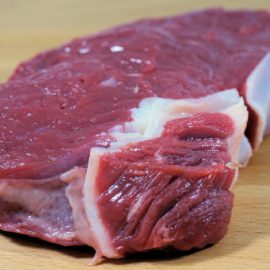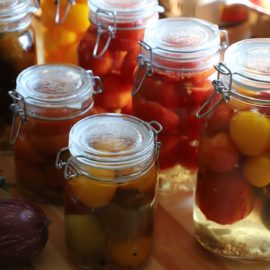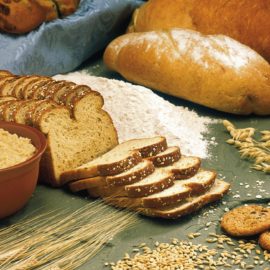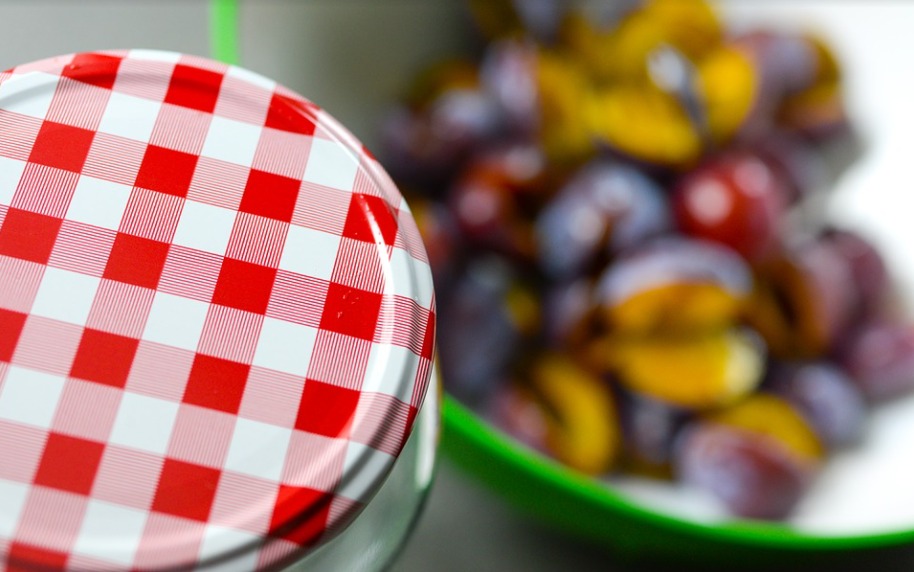
Canning is one of the best ways of preserving many foodstuffs at home—from vegetables to even meat sauces. Generally, canning refers to packaging of food in a container and subjecting it to a high temperature in order to extend its shelf life. The main objective of the heat treatment is to eliminate the spoilage and pathogenic microorganisms that may be present. When done properly, the product can last for a year or so. But of course, that depends on several factors, such as the nature of the food, container, and the process.
There are two main ways of canning that you can do at home: water bath canning and pressure canning. One may think that these methods can be used interchangeably no matter the food is involved. But no, that is not a good idea. That increases the risk of food poisoning.
To distinguish the two methods of canning, we have to talk about pH (refers to the acidity or basicity) and temperature.
WATER BATH CANNING VS PRESSURE CANNING
The primary factor that decides which canning method to use is the food’s pH value. pH determines acidity or basicity. The pH ranges from 0 to 14. pH of 7 is neutral (water has a pH of 7). Foods that have a pH of lower than 7 are acidic, whereas foods whose pH is higher than 7 are basic. Basically, the lower the pH values, the lower the degree of heat required for sterilization.
Water bath canning
Water bath canning involves placing a packed and loosely sealed container in a water bath for a specific time to bring the food’s temperature inside to 212 °F (100 °C). A water bath can be a pot large enough to fit the jars inside as the jars have to be completely submerged.
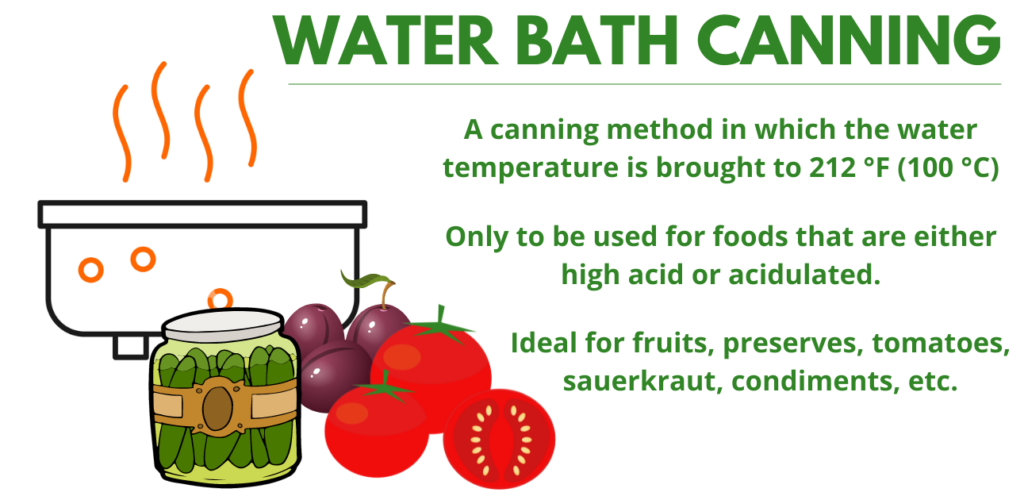
During processing, the high temperature expands the food inside and removes all the air out of the container. Afterwards, the jars cool and contract, forming a vacuum seal. This vacuum seal prevents possible contaminants such as moisture, air, and spoilage microorganisms from entering the container.
The only disadvantage of water bath canning is that it can only heat up food at water’s boiling point of 212 °F (100 °C). For this reason, water bath canning is only advisable for foods that are high in acid such as fruits and pickled vegetables, whose pH is 4.6 or lower. Fruits are generally high acid foods, but there are some that require acidulation since their pH levels are close to 4.6. These fruits include tomatoes, figs, and rhubarb. This study effectively acidified canned tomatoes using citric acid and lemon. Acidification using vinegar was less effective and produced off-flavors.
Pressure canning
Pressure canners are often confused with pressure cookers. But here is the thing: while both equipments cook food, only pressure canners are actually capable of preserving foods.
Generally, pressure canners are used to sterilize and safely preserve low acid foods.
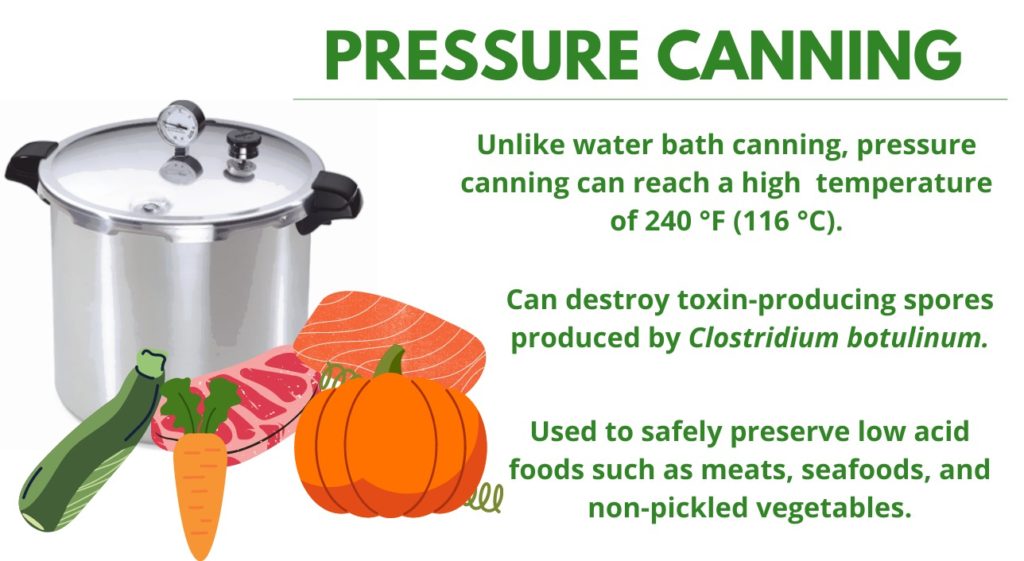
Low acid foods are foods whose pH levels are higher than 4.6. These include meats, seafoods, and non-pickled vegetables. While high acid foods do fine processing by water bath canning, low pH foods require a higher processing temperature of 240 F (116 °C) to compensate for the lack of natural acid. Pressure canners can reach temperatures that exceed the water’s boiling point because their lid is fitted with a rubber gasket. This traps the steam to build up pressure and raise the temperature inside the canner.
But why do low acid foods require a higher canning temperature than high acid foods? Well, to better answer this question, we will talk about the three types of microorganisms that are often associated with food: yeast, molds, and bacteria.
Further reading: Home Canning: How To Tell If Food Has Gone Bad?
YEAST AND MOLDS
Yeast and molds are spoilage microorganisms that belong in the fungi kingdom. One key difference between the two is that yeast are unicellular, whereas molds are multicellular. They may or may not be visible to the naked eye. While there are molds that are relatively harmless, some are able to produce mycotoxins. Mycotoxins, like the name suggests, are toxic compounds the may cause disease or even death in humans. What’s worst is that these toxins are stable that food processing does not destroy them. Yeasts can also produce fermentation in home canned foods. But both can turn food inedible and even harmful to consume.
Yeast and mold’s ability to spoil many food items is due to their versatile environmental requirements. Bacteria cannot grow well in environments of low pH—they generally grow best at near neutral pH (6.5-7.0). Yeast and molds, on the other hand, are able to grow in acidic environments such as pickles, fruit preserves, and other high acid foods. However, yeast and molds in general are heat sensitive microorganisms. They are destroyed by heat at temperatures between 140 °F (60 °C) -160 °F (71 °C). And since water’s boiling point is 212 °F (100 °C), high pH foods can be preserved safely using water bath canning.
Water bath canning also inactivates enzymes in food. Enzymes are proteins that act as catalysts in various processes or reactions in all living things, including us. Without these enzymes, no life forms would exist. However, one major problem with enzymes is that they cause spoilage in foods. Fortunately, elevated temperatures starting at 140 °F (60 °C), too, can easily neutralize these enzymes.
BACTERIA
Bacteria are unicellular eukaryotic microorganisms. Most bacteria can tolerate temperatures that yeast and molds are susceptible to. And they continue to live even without the presence of oxygen in a moist environment—such as a sealed jar. Although some species of bacteria are sensitive to heat that they die at 120°F (49°C). Temperature starting at 160°F (71°C) destroys the vegetative cells of many bacteria, which include spoilage bacteria, food pathogens, and lactic acid bacteria. The destruction of these bacteria is even more potent if the pH value is low. This is the reason why many food products rely on the combination of acidity and thermal processing for shelf life stability and safety.
You might also like: Factors That Affect Growth of Harmful Microorganisms
But as we know, there are foods that lack the natural acidity to make them inhospitable to bacteria. For this reason, they require processing that involves higher temperature that can only be achieved with pressure canning. Moreover, some bacteria are spore formers. Spores are the dormant or survival form of bacteria. They are more resistant to high temperature and other harsh conditions. The most commonly associated spore-former in home canned foods is C. botulinum. Its spore can produce botulinum toxins that are potentially fatal.
While C. botulinum cells are destroyed at boiling temperature, the spores it produces can withstand it. To destroy both the bacteria and the spores in low pH food, pressure canning must only be used as it reaches processing temperature of 240 F (116 °C).
Other references:
B. Caballero, P. Finglas and F. Toldrá (2016). Encyclopedia of Food Sciences and Nutrition (2nd Edition), Academic Press.
M. Shafiur Rahman (2007). Handbook of Food Preservation (2nd edition). CRC Press.
B. Caballero, P. Finglas and F. Toldrá (2016). Encyclopedia of Food and Health. Academic Press.
